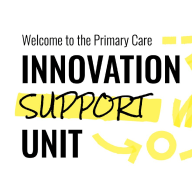Decision Stack
Having recently created our own decision stack in an attempt to bring alignment and focus to all that we do, we decided to make a decision stack Miro template that we can reuse in the future and to provide a springboard for others. We used Martin Eriksson's decision stack as a starting point and adapted it to suit our needs.
What is it?
A one-pager that anyone in your organization can go to and immediately understand:
- Where you’re heading long-term
- What your medium-term mission is
- What your shorter-term objectives are
- How to measure progress towards objectives
- The fundamental beliefs and principles that will drive you towards your aims
How to get the most out of it
If you already have a clearly defined strategy, that’s great. Could you layer it over the decision stack and come out with a punchier artifact that your people could rally around? If you don’t have an established starting point, then read our story of how we populated our own decision stack in our dogfooding article.
In terms of content of your stack, start at the top and work your way down. First up, vision or purpose. This could be a one-liner on what the future looks like, say 5 to 10 years from now, or the driver that gets you out of bed in the morning. See our product vision article.
Next up is your mission, which is more likely to be a shorter time horizon. We opted for 12 months. This should move you towards your purpose/vision, and is there to hang your objectives off.
We recommend having three to five objectives, each of which will move you towards completing your mission. These should be simple, clear, meaningful, audacious, and inspiring.
Between one and three key results should hang off each of the objectives. Key results should be specific, time-bound, aggressive yet realistic, and crucially, they must be measurable. You could use our Google Sheets OKRs template here to help you keep track of these and keep them front of mind.
Lastly, three to six principles should underpin all the other strategic pillars. Think of these as foundational values and beliefs that guide day-to-day decision-making. They help crystallize the inherent trade-offs needed in any good strategy. Read more in our product principles article. As with the others, clarity and simplicity is key here.
We recommend that you review the decision stack at least quarterly. Don’t treat it as set in stone - we’d fully expect the OKRs to evolve throughout the year, and the mission to change year on year.



Comments
Read our Community Guidelines and Terms of Use.